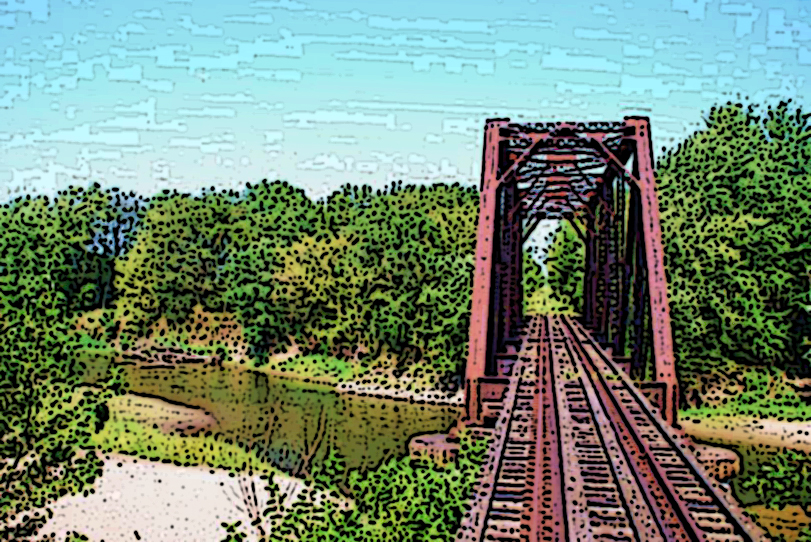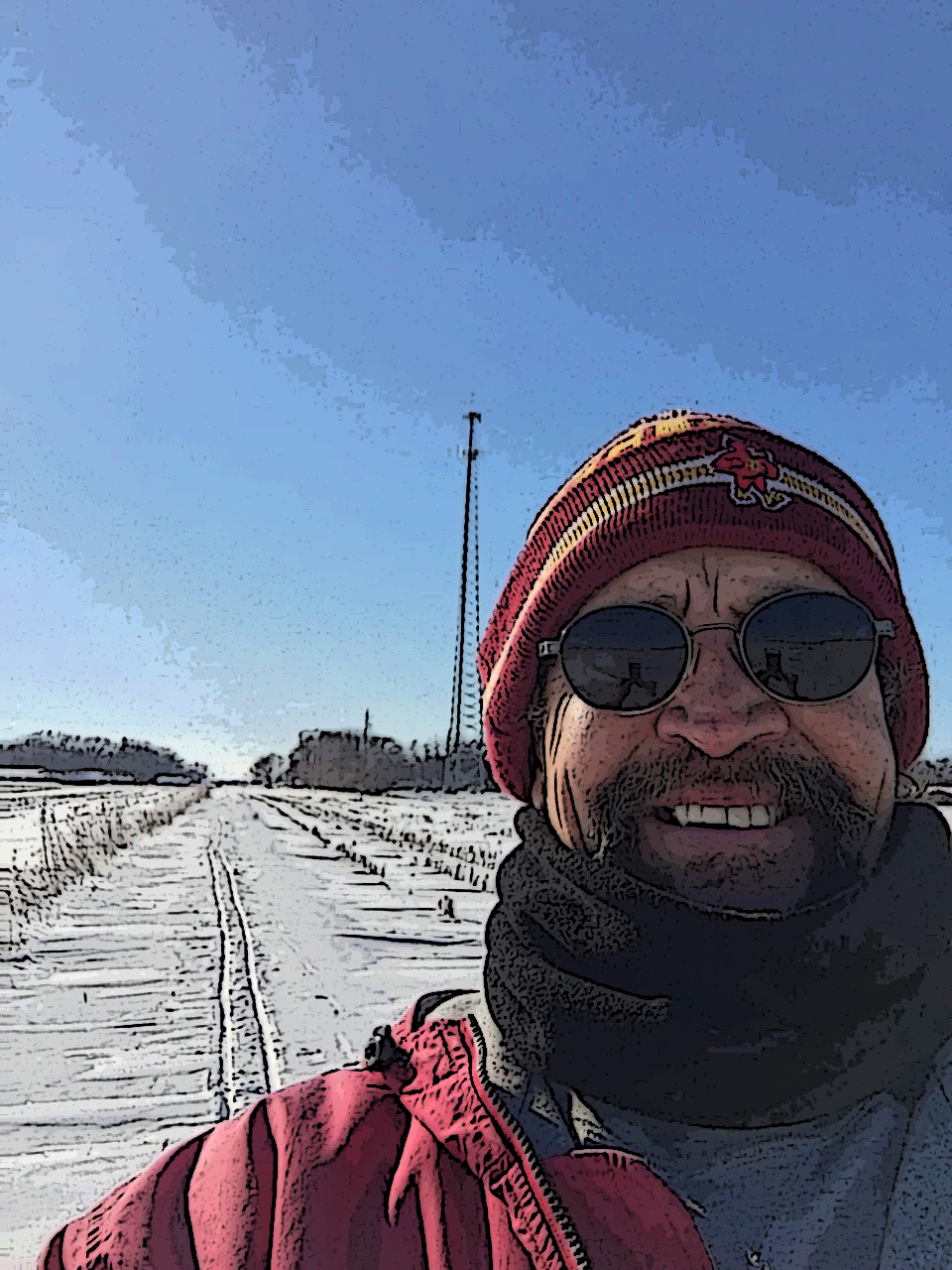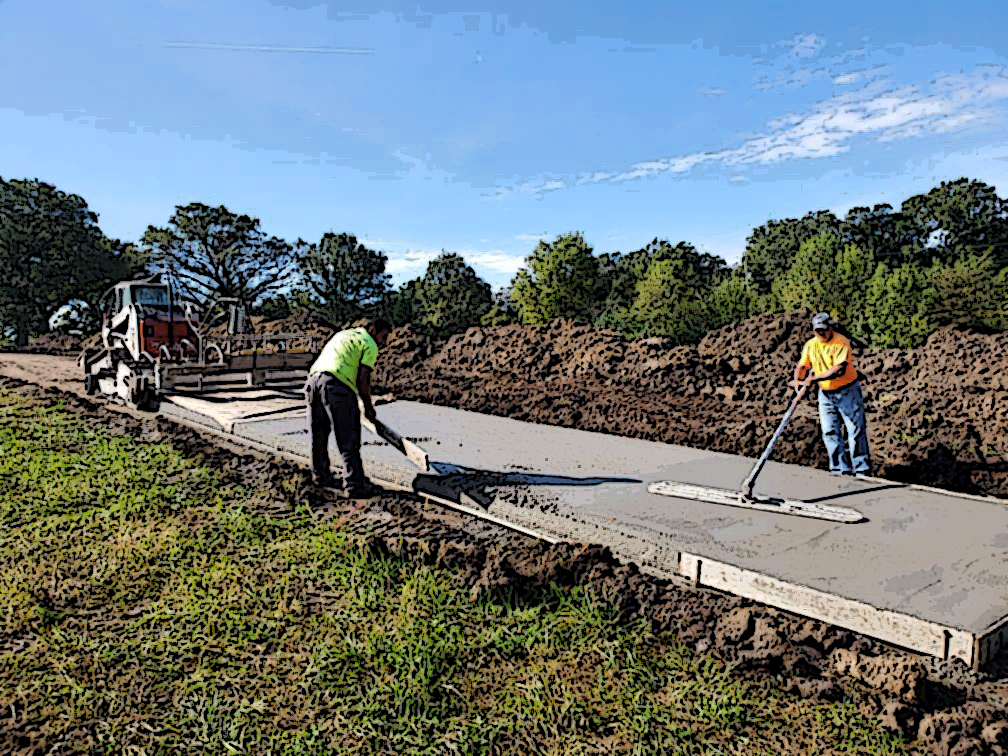Building Trails & Bolstering Communities
By Joe Jayjack on February 25, 2020 in Blog
Trails are connectors.

Trails connect people to nature, to attractions and to each other. Trails connect wildlife with habitat and corridors for migration. Trails connect communities with better public health and economic development opportunities.
For small-town Iowa, those connections are more important than ever.
“INHF has had the opportunity to help with trail projects all over Iowa,” said INHF Trails and Greenways Director Andrea Boulton. “The biggest hurdle is almost always money. But the thing that all successful trail projects have in common is a group of determined people that want to improve their community.”
Iowa River’s Edge Trail, Eldora
Chris Weiting doesn’t consider himself a cyclist. “I’m more of a runner than anything.” But he knows the trail that will connect his hometown of Eldora with six other central Iowa towns is about much more than bikes.
“For me it’s really community driven. Seeing my community become a better place,” Weiting said. “Rural Iowa still has a lot to offer in terms of raising a family and building a business. The community element of a small town can’t be duplicated. Now we can add another element.”
Once complete, the Iowa River’s Edge Trail (formerly known as the Iowa River Trail) will run 34 miles from Steamboat Rock to Marshalltown through the Iowa River Greenbelt. INHF has been assisting with strategic planning, fundraising, land purchases and grant writing throughout the years-long trail project.
Three miles of trail have been paved from the trailhead in Marshalltown. Another mile has been paved from the opposite trailhead in Steamboat Rock, with plans to pave the remaining four miles to connect with Eldora in 2020.
“We have a lot of great recreation opportunities in Hardin County. This was
a giant added bonus to connect those
entities. The River’s Edge Trail becomes that connection to take people from community to community and showcase everything along the route,” Weiting said.
Weiting, who grew up in Eldora, lived in Kansas City for many years before moving back 12 years ago. He said when he was in school, most kids came from farm families or had parents with manufacturing jobs.
“Today, with family farm consolidation as well as manufacturing jobs that have gone away, small towns — that future is really uncertain,” he said. “This trail is the next step to making sure that our community doesn’t continue to shrink.”
In addition to attracting people to live and work in the communities along its route, the Iowa River’s Edge Trail, which is along the proposed route for the cross-country Great American Rail Trail, has the potential to become a major tourist destination.
“It doesn’t happen overnight. We’re going to build something long-lasting that attracts people to our area,” Weiting said.
Admiral Trail, Farragut
In contrast to many rural communities
in Iowa, the small southwest Iowa town of Farragut is experiencing growth. A local couple recently bought the shuttered high school and turned it into apartments, creating affordable living spaces in the town of 485.

“If we’ve got young people coming into the community, we need a good trail that can be used year-round so kids aren’t always riding on the streets and sidewalks,” said Jeff McQueen, who chairs the committee working to build the 7.3-mile Admiral Trail to connect Farragut with Shenandoah.
McQueen, who lives in nearby Riverton, has been part of the trail-building effort since 2012. He also notes that the trail would create a safer and shorter route for cyclists to connect with the 63-mile Wabash Trace Nature Trail in Shenandoah.
Forty people attended their first annual walk, nearly 10 percent of the town’s population. “There is a lot of enthusiasm
for this trail,” Boulton said. “People like Jeff know what a project like this can mean to their community, and they’re working hard to make it happen.”
INHF helped write a grant for the purchase of the abandoned railroad from Burlington Northern-Santa Fe, and briefly held the land before transferring it to the city of Farragut in 2017. Community members can often be seen walking the grassy path that leads northeast out of town. The goal is to begin with a crushed rock trail and eventually pave it to make it more accessible year-round.
“I had no idea how hard it is for a small community to raise the funds for a trail like
this,” McQueen said. “We did a search for the engineering firm. The one thing we asked first was if it would be possible to complete by 2020. They all said yes, but the money is not there. There are so many communities going after the funding.”
They are also competing for the attention of contractors in southwest Iowa, which was hit hard by flooding in 2019. McQueen hopes they can begin work on paving in July or August. In the meantime, they will continue fundraising.
“It will provide a safe place for people to go and enjoy nature,” McQueen said. “I think it’s going
to bring more people into Farragut, and I think you’re going to see a lot of people use the trail.”
Grant Park Trail, Auburn

A trailhead with nature-inspired public
art, two bridges that span the north fork of
the Raccoon River, a butterfly sanctuary and a wooded county park offering camping, fishing and wildlife viewing opportunities. All of that packed into a mile-and-a-half will make the town of Auburn’s Grant Park Trail one of the most scenic community trails in Iowa.
Jane Barto grew up in Auburn. She lived and worked in Des Moines for years before returning to her hometown post-retirement. She has been working to make the Grant Park Trail happen as a member of the Auburn City Council and Auburn Hometown Pride, a program of Keep Iowa Beautiful.
“I think the trail will be a huge statement that a small number of people with limited resources can do great things. It will show Auburn is a vibrant community that cares about the people that live here.” Barto said. “It sends a huge message to all those people that just drive through Auburn and never think twice about it. People notice.”
Trail supporters have gotten creative, holding fundraisers ranging from a sunflower growing contest to a bingo night, raising more than $300,000; about half of what will be needed to complete the trail. The project also received a $30,000 grant from the Resource Enhancement and Protection (REAP) program.
Three-quarters of a mile of concrete
trail have already been paved going out of
the north end of town. Yet to be completed
are brickwork and art at the trailhead, the butterfly sanctuary in Oaklawn Cemetery, earthwork to manage the significant elevation changes and the remaining paving. The committee is aiming to complete the project in 2020, pending fundraising.
The northwest Iowa town of 322 people is in a situation similar to many rural communities: it lost both its public and parochial schools along with many of its main street businesses. Barto thinks this trail project will provide more than a place for people to get outside.
“You can feel the attitude changing from ‘We’re never going to get this done. It’s too expensive,’” Barto said. “Now you hear people talking about other projects, the next one we’re going to do. It changes the attitude of who we are as a community, starting with ourselves.”